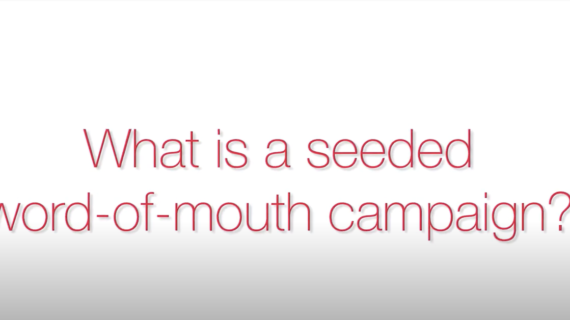Q: What is a seeded word-of-mouth (WOM) campaign?
A seeded WOM marketing campaign is a strategic use of target product sampling by a firm, designed to encourage consumers to spread product information via word of mouth. Companies typically send free product samples to select consumers and encourage them to try the product and share their opinions with others. Once a product is tested, these consumers, also known as “seeds,” often post their feedback on product-focused community forums. For example, if a consumer is sent a free lipstick sample, they are expected to share their thoughts about the product on a cosmetics online forum, and it is through such forums that word of mouth may propagate.
Q: How does WOM impact different products within the same brand?
We have found that while WOM positively impacts the volume of conversation for the specific item it is focused on, it can have unintentional and potentially negative consequences for other products under the same brand. For instance, if Chanel launches a WOM marketing campaign focused on their lipstick, our results show that a negative WOM brand spillover will lead to a dip in conversation volume about other products made by Chanel (such as Chanel nail polish).
Q: How does WOM impact competing brands?
We have predicted and empirically demonstrated that similar negative WOM spillovers also occur for other brands when a company launches a WOM marketing campaign. Using the same example as above, if Chanel were to deploy a seeded word of mouth campaign to promote their new lipstick, competing brands would notice negative impacts on volumes of WOM focused on their lipsticks. In other words, Chanel would flood the cosmetics community with talk about their lipstick, while simultaneously taking conversation away from similar products produced by other brands.
Q: What advice would you give to companies considering WOM campaigns?
When companies plan WOM campaigns, they need to take into account potential spillover effects. It is important for a brand to understand that a WOM campaign for one of their products will likely result in less talk about their other offerings. On the other hand, a company can strategically use negative spillovers from WOM campaigns to their advantage if they want to suppress conversations about their competitors' offerings in the same category
Hear more from Professor Bart in the video below that further examines the findings of his research.

Professor Yakov Bart on a seeded word-of-mouth campaign
Learn more here: Marketing Science: Spillover Effects in Seeded Word-of-Mouth Marketing Campaigns (with Inyoung Chae, Andrew T. Stephen and Dai Yao), forthcoming at Marketing Science
Abstract:
Seeded marketing campaigns (SMCs) involve firms sending product samples to selected customers and encouraging them to spread word of mouth (WOM). Prior research has examined certain aspects of this increasingly popular form of marketing communication, such as seeding strategies and their immediate efficacy. Building on prior research, this study investigates the effects of SMCs that extend beyond the generation of WOM for a campaign's focal product by considering how seeding can affect WOM spillover effects at the brand and category levels. The authors introduce a framework of SMC-related spillover effects, and then empirically estimate these with a unique dataset covering 390 SMCs for products from 192 different cosmetics brands. Multiple spillover effects are found, suggesting that while SMCs can indeed be used primarily to stimulate WOM for a focal product, marketers must also account for brand- and category-level WOM spillover effects. Specifically, product seeding increases conversations about that product among non-seed consumers, and, interestingly, decreases WOM about other products from the same brand and about competitors' products in the same category as the focal product. These findings indicate that marketers can use SMCs to focus online WOM on a particular product by drawing consumers away from talking about other related, but off-topic, products.

